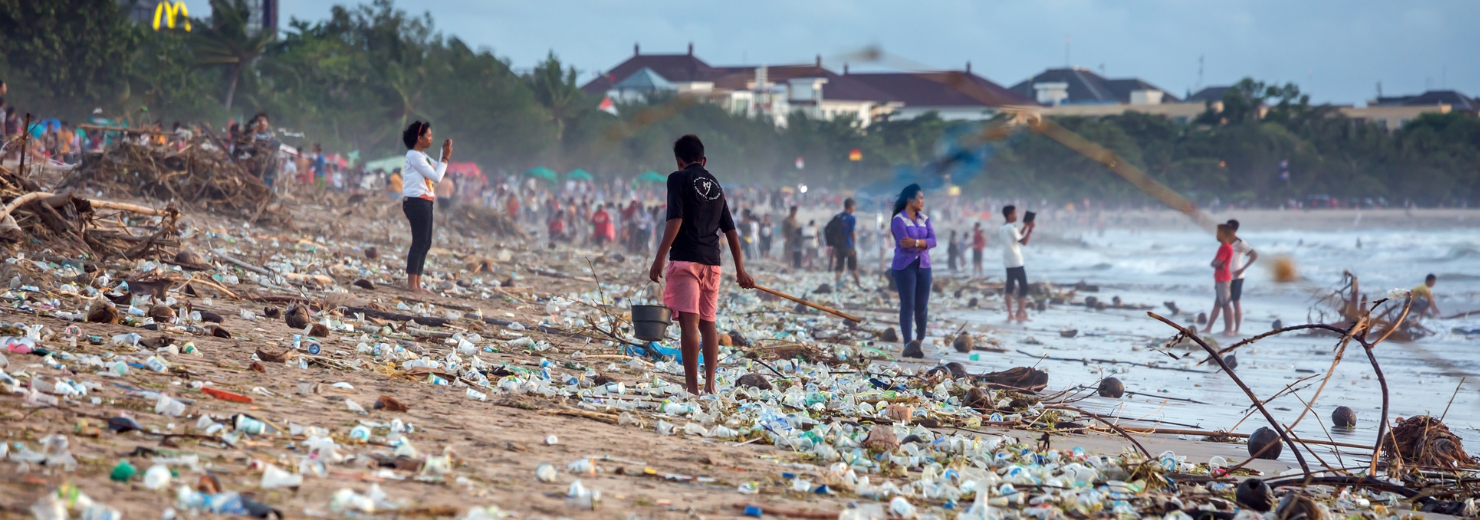City Waste Landscapes: Navigating local plastic pollution data for targeted solutions
-

-
Nurul Aisyah Suwandi
-
February 13, 2024
-
6 min read

Nurul Aisyah Suwandi
February 13, 2024
6 min read


Plastic waste pollution is a challenge that is localized in nature, with the need for targeted strategies to address the issue. Reliable, local-level data is critical to lay a strong foundation for planning coordinated action among multiple stakeholders. Good quality baseline data also helps cities benchmark their progress, plan for waste management, and implement effective strategies.
The currently available data on plastic waste pollution is fragmented and there is a lack of standardization around the data points collected to understand the waste landscape. In a previous blog, “The key to ensuring effective plastic waste reduction? More city-level data”, we identified these gaps in data availability. Data on basic but critical data points, such as plastic waste generation and collection rates and plastic leakage rates, are unreported or remain scattered across multiple sources.
Introducing The Circulate Initiative’s City Waste Landscapes database
In an effort to address data gaps and provide a single resource for local datasets, The Circulate Initiative launched the City Waste Landscapes database. City Waste Landscapes provides data for 75 cities across 22 countries in Asia, Latin America and the Caribbean. This one-stop platform aims to simplify the search for relevant information and facilitate an improved understanding of the plastic pollution situation in the selected cities. The database provides data on eight critical datasets to support a first assessment of the plastic waste situation in each city. These include demographics; municipal solid waste and plastic waste management; municipal solid waste composition; waste management; ecosystem and key actors; investments; policies; and programs and other initiatives.
The data featured in the City Waste Landscapes database has been compiled through conducting an extensive literature review for each city using the latest available data (as of June 2023). The data sources consulted include national and local government websites; reports from leading organizations in the plastic pollution and circular economy space, such as the International Union for Conservation of Nature, United Nations Development Programme, and the World Bank; journal or academic articles, for example from the Journal of Civil Engineering and Environmental Technology; and news articles. To provide full transparency of sources, the data’s year of reference and links to the original data sources are provided where available.
To illustrate the range of data covered in the database, the following are some of the key learnings.
As income increases, so does municipal solid waste (MSW) and plastic waste generated per capita
Across the 75 cities, gross domestic product (GDP) per capita, and the MSW and plastic waste generated per capita are positively correlated. The higher the GDP per capita of the city, the greater the consumption, which in turn means more waste generation. For the capital cities in the selected Asian countries, in particular, there is a strong positive correlation between MSW and plastic waste generated per capita, and GDP per capita (with a correlation coefficient of 0.93 and 0.85, respectively – Figure 1). There are exceptions in the cases of Bangkok, Hanoi, and Phnom Penh, where the waste amounts are higher despite the relatively lower GDP per capita in these cities. Having a baseline understanding of the waste generation and its correlation with a growing economy gives cities robust benchmarks to project future waste generation and to build corresponding waste management infrastructure.
Figure 1. Strong correlation between economic growth, and municipal solid waste and plastic waste generation

Note: No data on GDP per capita was found for Vien Tien, Laos. The data points presented are also from different sources and years, with data from 2017 to 2023.
Plastic collected for recycling at a city level is not consistently reported, with data found for only one-third of the cities
Data for plastic collected for recycling was found for 25 of the 75 cities in the City Waste Landscapes database. Of these 25 cities, the plastic collected for recycling ranges from 4% to 60%, with Delhi and Kolkata having the highest rate of plastic collected for recycling. The higher plastic recycling rates in these two cities are likely driven by the large presence of informal waste workers. Delhi has 200,000 to 500,000 waste workers,1 while Kolkata also has amongst the highest reported number of waste workers at 53,000. However, other factors such as existing infrastructure for waste management, efficiency of sorting facilities, and the presence of regulations that promote or hinder recycling can contribute to the amount of collected plastic that gets recycled. This datapoint on plastic collected for recycling is critical to enable cities to identify points of intervention and track their progress in increasing the recycling rate of plastics.
Data on informal waste worker numbers at a city level is rarely tracked, with less than 50% of the cities having reported numbers
In several emerging economies, waste workers, particularly those in the informal sector, are largely responsible for the plastic waste recovered and recycled. For example, in Southeast Asia, the informal sector is responsible for over 90% of PET bottles collected for recycling.2
On a city level, there is a lack of granular data on waste worker numbers. Among the 75 cities covered in the database, data on waste workers was identified for only 37 cities, with the reported number of waste workers ranging from 50 to 500,000. According to the Waste Wise Cities tool, waste workers are defined as individuals who extract recyclable materials from the waste stream to support their livelihood, selling these materials into the recovery system. Despite the critical role waste workers play in the recovery of plastic waste, the lack of visibility on their numbers in a city signals that many may be unaccounted for. This leaves them vulnerable to remaining marginalized and under-represented. As the development of socially responsible supply chains gains momentum, an understanding of the scale of waste workers in each city would help ensure that programs to support and empower them are able to reach as many individuals as possible.
Growing the wealth of city-level data for effective management of plastic pollution
The learnings highlighted above are a snippet of the data featured in the City Waste Landscapes database. The platform allows users, from individuals to city planners, non-governmental organizations (NGOs), corporates, and investors, to glean insights from a particular city, compare and contrast, and learn from each city’s programs and initiatives.
As the data has been collected through desktop research, we recognize that there may be newer or local-language data sources that we may not have considered. We invite you to share your feedback through the feedback form on the tool page so that we can improve the data available on the database. As the collaborative ecosystem grows, and with more robust and reliable city-level data through the City Waste Landscapes database and initiatives such as Urban Ocean, cities can plan effective, tailored strategies for dealing with plastic pollution.
References:
1 The Circulate Initiative. (2023). Mapping Local Plastic Recycling Supply Chains: Insights from Selected Cities in India [online]. Available from: https://staging.thecirculateinitiative.org/wp-content/uploads/Mapping-Local-Plastic-Recycling-Supply-Chains_Insights-from-Selected-Cities-in-India.pdf
2GA Circular. (2019). Full Circle: Accelerating the Circular Economy for Post-Consumer PET Bottles in Southeast Asia [online]. Available from: https://www.gacircular.com/_files/ugd/d424f7_d612161763824d3b9fbbf00affea9a9f.pdf